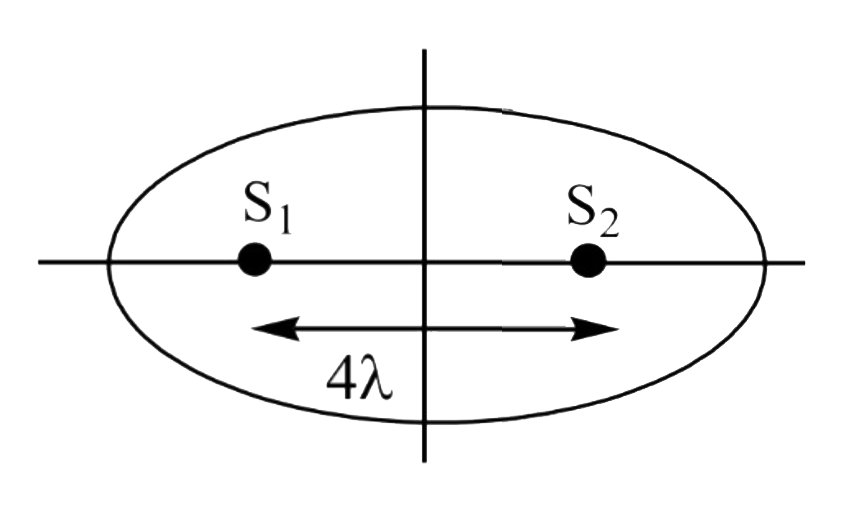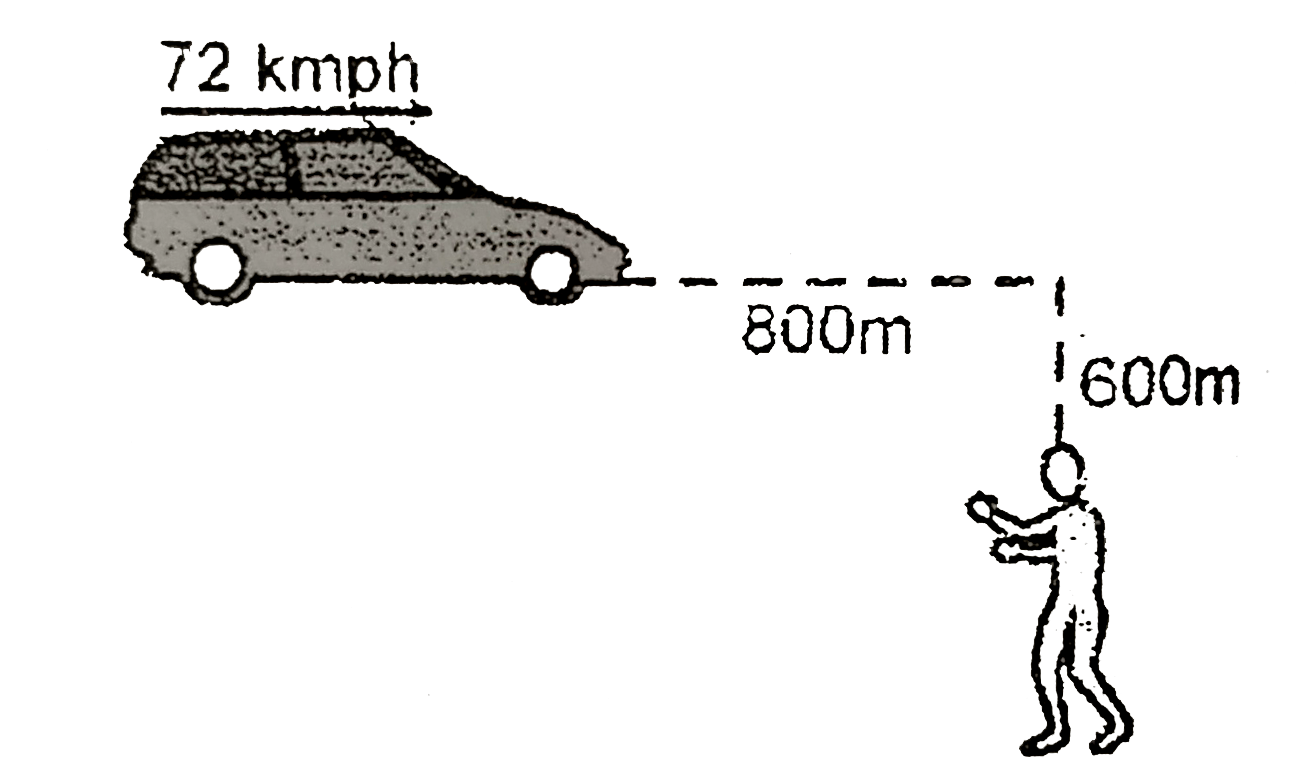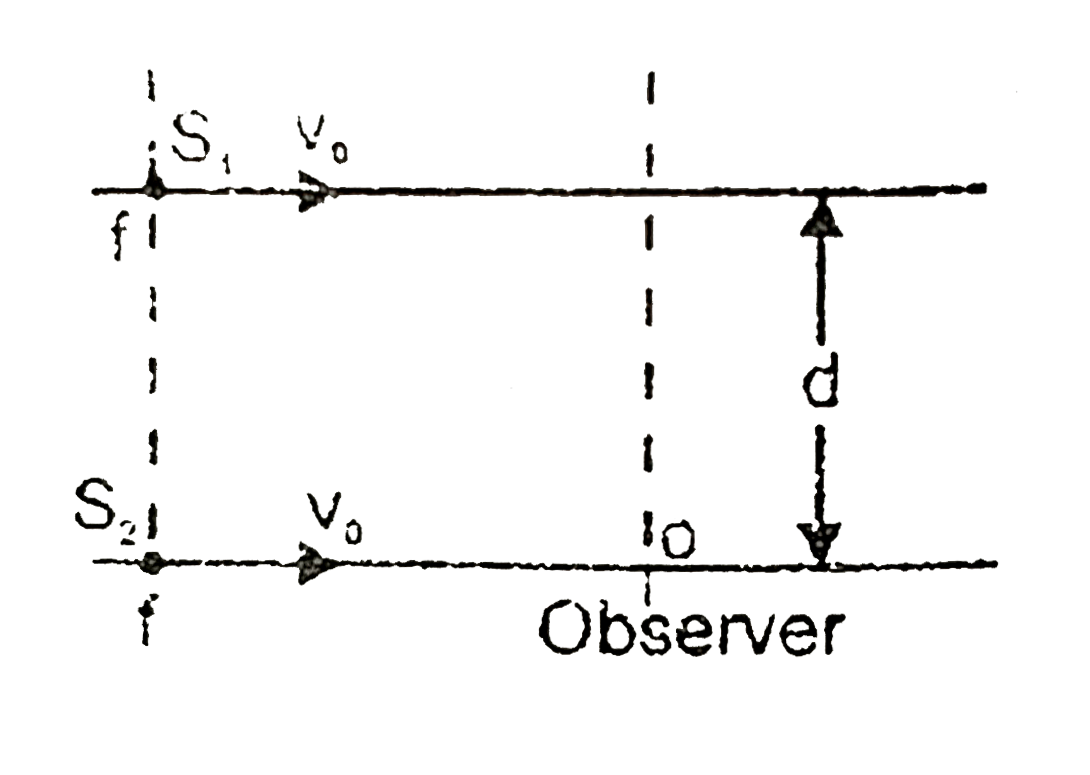Complete Solutions to Exercise- 2 PART - I of chapter SOUND WAVES of Class 11 book with complete answers and questions
| Class 11 | PHYSICS |
| Chapter | SOUND WAVES |
| RESONANCE | Exercise- 2 PART - I |
| Number Of Questions | 24 |
| Academic Year | 2023-24 |
When we clap our hands, the sound produced is best described by Here p denotes the change in pressure from the equilibrium value
View SolutionA source of sound with adjustable frequency produces 2 . beats per second with a tuning fork when its frequency is either 476 Hz or 480 Hz. What is the frequency of the tuning fork ?
View Solution`S_1 , S_2` are two coherent sources (having initial phase difference zero ) of sound located along x - axis separated by `4lamda` Where is `lamda` wavelength of sound emitted by them . Number of maxima location on the elliptical boundary around it will be : [ `S_1 and S_2` are assumed to be at focus of ellipse ]

View Solutiontwo speakers A and B , placed 1 m apart, each produces sound waves of frequnecy 1800 Hz. In phase. A detector moving parallel to line of speakers distant 2.4 m away detects a maximum intensity at O nd then at P. speed of sound wave is

View SolutionIn a large room , a person receives direct sound waves from a source `120 m` away . He also receives waves from the same source which reach him after being reflected from the ` 5m` high ceiling at a point halfway between them . For which wavelengths will these two sound waves interfere constructively ?
View SolutionThe displacement of a medium in a sound wave is given by the equation `y_(1)=Acos(ax+bt)` where A, a and b are positive constants. The wave is reflected by an obstacle situated at x=0. the intensity of the reflected wave is 0.64 times that of the incident wave.
(i) What are the wavelength and frequency of incident wave ? ________ (ii) Write the equation for the reflected wave. _________ (iii) In the resultant wave formed after reflection, find the maximum and minimum values of the particle speeds in the medium. ____________ (iv) Express the resultant wave as a superposition of a standing wave and a traveling wave. What are the positions of the antinodes of the standing wave ? What is the direction propagation of traveling wave?__________
View SolutionThe ratio of the speed of sound in nitrogen gas to that in helium gas at `300 K` is.
View SolutionTwo monatomic ideal gas 1 and 2 of molecular masses `m_(1) and m_(2)` respectively are enclosed in separate containers kept at same temperature. The ratio of the speed of sound in gas 1 to that in gas 2 is given by
View SolutionA closed pipe resonates at its fundmental frequency of `300 Hz`. Which one of the following statements is wrong ?
View SolutionA closed organ pipe and an open organ pipe have their first overtones identical in frequency. Their lenghts are in the ratio
View SolutionAn open pie is suddenly closed at one end with the result that the frequency of third harmonic of the closed pipe is found to be heigth by `100 H_(Z)` than the fundamental frequency of the open pipe. The fundamental frequency of the open pipe is
(a) `200 H_(Z)` (b) `300 H_(Z)` (c ) `240 H_(Z)` (d) `480 H_(Z)`
View SolutionThere is a set of four tuning forks , one with the lowest frequency vibrating at `550 Hz`. By using any two tuning forks at a time , the following beat frequencies are heard : `1 , 2, 3, 5 , 7 , 8`. The possible frequencies of the other three forks are
View SolutionTwo sound sources produce progressive waves given by
`y_(1) = 6 cos 100 pi t`
and `y_(2) = 4 cos 102 pi t`
near the ears of an observer.
He will hear
View SolutionA fixed source of sound emitting a certain frequency appears as `f_(a)` when the observer is apporoaching the source with `upsilon_(0)` and `f_(r)` when the observer recedes from the source with the same speed. The frequency of source is
View SolutionWhen a train approaches a stationary observer, the apparent frequency of the whistle is `n'` and when the same train recedes away from the observer, the apparent frequency is `n''`. Then the apperent frquency `n` when the observer sitting in the train is :
View SolutionA police car moving at `22 m//s`, chase a motoclist. The police man has horn at `176 H_(Z)`, While both of them move towards a stationary siran of frequency `165 H_(Z)`. Calulate the speed of the motorcyclist, if he does not observer any beats. (velocity of sound in air `= 330 m//s)`

View SolutionA siren placed at a railway platfrom is emitted sound of frequency `5 kH_(Z)`, A passenger sitting in retun journey in a different train `B` he records a frequency of `6.0 kH_(Z)` while approaching the same siren. The ratio of the velocity of train `B` to that of train `A` is
View SolutionA train moves towards a stationary observer with speed `34 m//s`. The train sound a whistle and its frequency registered by the observer by the observer is `f_(1)`. If the train's speed is reduced to `17 m//s`, the frequency registered is `f_(2)`. If the speed of sound is `340 m//s`, then the ratio `f_(1)//f_(2)` is
View SolutionA train blowing its whistle moves with a constant velocity `v` away from an observer on the ground. The ratio of the natural frequency of the whistle to that measured by the observer is found to be `1.2`. If the train is not rest and the observer moves away from it at the same velocity, this ratio would be given by
View SolutionIn the case of sound waves, wind a blowing from source to reciver with speed `U_(W)`. Both source and receiver are stationary.If `lambda_(0)` is the original wavelength with no wind and `V` is speed of sound in air then wavelength as received is given by :
View SolutionTwo sound sources emitting sound each of wavelength `lambda` are fixed at a given distance apart. A listener moves with a velocity `u` along the line joining the two sources. The number of beats heard by him per second is
View SolutionA car is approching a railway crossing at a speed of `72 kmph`. It sounds a horn, when it is `800 m` away, at `600 Hz`. If the velocity of sound in air is `330 ms^(-1)`. The apparent frequency as received by a man at rest near the railway track perpendicular to the road at a distance of `600 m` from the crossing the

View SolutionTwo identical source moving parallel to each other at seperation `'d'` are producing sounds of frequency `'f'` and are moving with constant velocity `v_(0)`. A stationary .observer `'O'` is on the line of motion of one of the sources. Then the variation of beat frequency heard by `O` with time is best represented by: (as they come from large distance and go to a large distance)

View SolutionA source which is emitting sound of frequency `f` is initially at `(-r,0)` and an observer is situated initally at `(2r, 0)`. If observer and source both are moving with velocities `overset(vec)(v)_("observer") = -sqrt(2)Vhat(i) - sqrt(2)hat (j)` and `overset(vec)(v)_("source") = (V)/(sqrt(2))hat(i) + (V)/(sqrt(2))hat(j)`, then which of the following is correct option ?
View Solution
Exercise- 2 PART - I questions and complete solutions for chapter SOUND WAVES of RESONANCE ENGLISH of Class 11